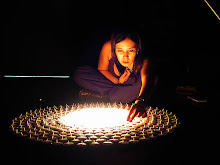NEWS: Aside from her solo practice Shoufay Derz is also currently working together with fellow Sydney based artist Owen Leong on a new exhibition project. Entanglement will be a new collaborative video-installation informed by Garcia Lorca’s notion of duende as a dark creative force. Blending dark fantasy, parallel worlds, and remote means of communication, Entanglement creates a shadow realm in which two individuals converge to engage in a deadly game. This exhibition plays upon the idea that with any relationship, there exists an implicit separation. Entanglement is an exercise in transcending one’s own perimeters, where the ultimate aim is to form a link with an other. Entanglement will be held in at Westspace, Melbourne.
In May/June 2007 Shoufay will "Artist In Residence" at Trinity Grammar School, Sydney.
You are warmly invited to the opening of my exhibition at Delmar Gallery on Wednesday 30 May 2007, 6-8pm.
Opening: Wednesday 30 May 2007, 6-8pm
Exhibition: 31st May – 9th June 2007
Gallery Hours: 1 2.00 – 7.00pm everyday for the entire festival
Venue: Delmar Gallery
Address: 144 Victoria Street Ashfield NSW 2131
Telephone: 02 9581 6070
www.trinity.nsw.edu.au
Transportation Love Song: Inseparable (part 1)
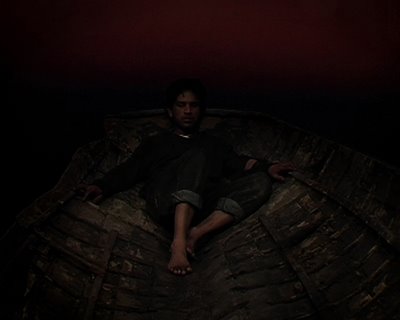
Video still

Video still
Video still
Video still
digital video; colour; silent; presented with English or Chinese subtitles.
original duration 14:44 minute loop
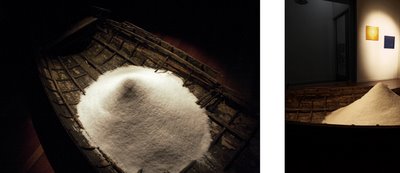
Installation shot: commissioned for Half Dozen festival, China town public art project, Asia-Australia Arts Centre, Sydney, January 2006
Digital Video, 14-foot boat of “carvel” timber construction*, photographic prints, salt
variable dimensions; duration 14:44 minute loop
*Originally a recreational vessel. It is over 100 years old, and was hauled from a riverbed in the Royal National Park, where it had been decomposing for decades.
Installation Shot: Trinity Grammar Arts Festival 07
Exhibition Essay:
Half Dozen presents…
YEAR OF THE DOG: Chinatown Public Art Project
Curated by Jasper Knight and David Teh
at 4A Gallery, Hay St, Sydney
6 – 21 January, 2006
Shoufay Derz
(with Divij Darbar, Peter Majarian, Xotchitl Quintanar and Matthew Venables)
Break-up, 2006; digital video installation
For most of us, going overseas actually means traversing the skies; but still today, many less fortunate people venture, literally, across the seas, in search of safety, peace and opportunity. But there is nothing reckless about these actions – the risks they and their families face are clear enough, but they are deemed acceptable risks, so great is the peril they leave behind, so urgent their need for relief.
In the Tampa incident and ‘Children Overboard’ affair, the Australian public bore witness – if only just – to two such desperate attempts for asylum. Instead of interpreting them as cries for help, our government chose to present them as brazen assaults on our national sovereignty. In the mirror of the media, the Australian public was subjected to the sad spectacle of a nation fleeing the world it inhabits – legislating itself out of existence – turning outlying islands into extraterritorial non-space where human rights are heaped in the too-hard basket. Our government’s role in the ‘Children Overboard’ affair stands as its grossest act of rhetorical indecency and moral recklessness. For many of us, this cowardice has been neither forgiven nor forgotten.
The boat is therefore a powerful symbol for contemporary Australia – a bridge between cultures, but a precarious bridge. The boat is more than a life raft, more than just a way of moving people and their belongings. Like all transport, it is also an information technology. From the first colonisation of our continent tens of thousands of years ago – which began its transformation into a culturally diverse land – boats have brought new ways of thinking, speaking and living, different technologies of being. The vessel is also a channel, a political vector.
For Shoufay Derz, the boat is an ambivalent metaphor, symbolising on one hand the feeling of transit, of being between places (for the boat is not a place) – and on the other, the impossibility of communication between two cultures. The artist herself is an Australian of German and Taiwanese heritage, and the imagery for this installation is drawn from several places: Tsing Tao in eastern China, coastal New South Wales and Tasmania. While these locations may be integrated seamlessly as landscape (or seascape), the mediation introduces its own disconnections, some impossible differences.
In Derz’s Break-up, an imperfect, imagined dialogue is recomposed from multiple video sources. Like speech itself, ‘new media’ also describes a set of languages (code), and the gaps between them can be just as profound as those between different cultures. These slippages necessitate and inform the editing. At times, the two channels converge and, briefly, comprehension seems possible. But not for long. Is it possible ever to be adequately understood? Or does understanding consist precisely in this experience of misunderstanding?
In The Infinite Conversation, Maurice Blanchot noted the necessity of this failure: “To speak to someone is to accept not introducing him into the system of things or of beings to be known; it is to recognise him as unknown and to receive him as foreign without obliging him to break with his difference.”
In our climate of repressed inter-cultural tension, Break-up explores the limits, possibilities and impossibilities of conversation. In a boat at sea, two figures must converse; but as day becomes night, they appear to inhabit different worlds, different times. Just as their conversation is full of holes, so too is the boat – it is far from sea-worthy; it is, perhaps like all communication, destined to fail.
Inseparable, 2006
Digital video installation; salt, timber boat*
* This 14-foot boat, of “carvel” timber construction, was originally a recreational vessel. It is over 100 years old, and was hauled from a riverbed in the Royal National Park, where it had been decomposing for decades.
Half Dozen is a non-profit, artist-run initiative dedicated to commissioning, promoting and exhibiting the work of emerging visual artists. For more info, please visit: www.halfdozen.org
Year of the Dog was commissioned by Half Dozen, in conjunction with The Asia-Australia Arts Centre (4A Gallery) and the NSW Government Architect’s Office. Half Dozen receives support from the Artist Run Initiatives program of the Australia Council for the Arts. Night screening (street view)
Night screening (street view)
 Opening night
Opening night
RADII HEART
A series of both Still Photographs and Video (193 minutes, 2-channel, silent). The video toured nationally as part of the
Blake Prize for Religious Art Touring exhibition 2002, and was exhibited again in 2004 at Sherman galleries, Sydney.
The installation is two video screens, each 193 minutes in duration. Each screen displays a circle of 360 candles. In Radii Heart (
inside out) a candle is lit every 30 seconds, beginning from the center and spiraling toward the periphery until all 360 have been lit. In Radii heart (
outside in) candles are lit, starting from the outside perimeter, then inwards towards the centre. The entire process takes 193 minutes. The lights flicker and some die off over the period of three hours, creating an impermanent and evolving quality of light.
The photographs ( 80 x 80 cm, photographs face mounted acrylic) were first featured in the exhibition
One of at Sherman galleries 2003. An image is published in the Sherman galleries publication TWENTY:SHERMAN GALLERIES 1986 - 2006.
You can view this work in the forthcoming touring exhibition: Light Sensitive, works for from the Verghis collection. This exhibition was first shown at Bathurst Regional gallery featured works from prominent contempoary artists whose use of light is intergral to their work. Curated by Richard Perram.
Examples from the Photographic series shown here:
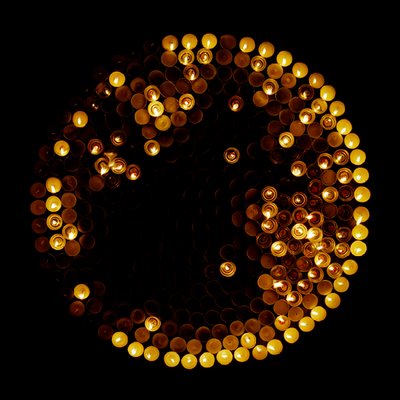
Radii Heart 340/360
80 x 80 cm
Lamda print, face mounted on acrylic
ed 5, 2004
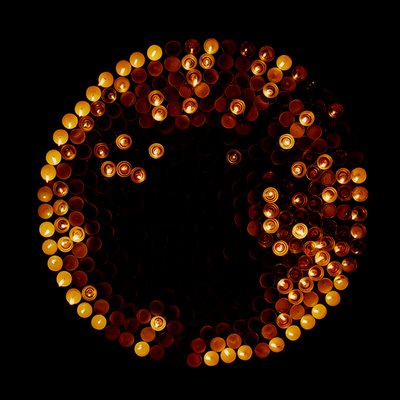
Radii Heart 357/360
80 x 80 cm
Lamda print, face mounted on acrylic
ed 5, 2004

Radii Heart 344/360
80 x 80 cm
Lamda print, face mounted on acrylic
edition of 5, 2004

Radii Heart 360/360
80 x 80 cm
Lamda print, face mounted on acrylic
edition of 1, 2004
The following images are Still frames from the accompanying video.


ON LINKING BACK
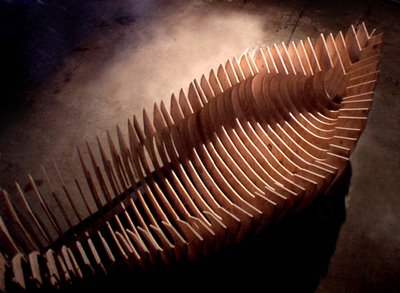
Installation shot: dreamboat


Installation shot: Linking back
Asia-Australia Arts centre,2004
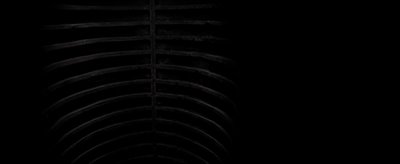
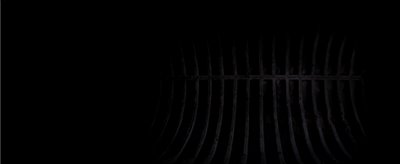
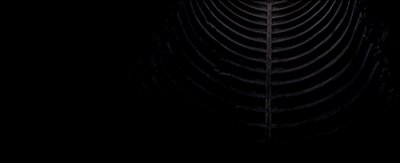
Linking Back
150 x 53 cm (x 3)
Lamda print, face mounted on acrylic
2003 Blake Prize for Religious Art Award
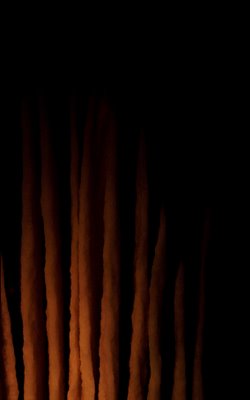
Curtain
62 x 100 cm
LOVE CAPSULE/TERMINIAL LOVES
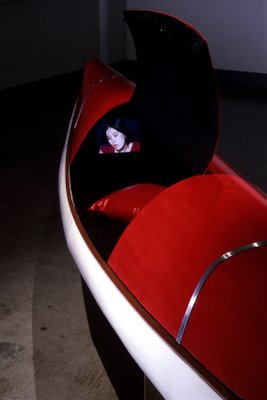
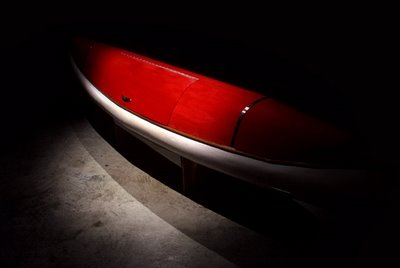
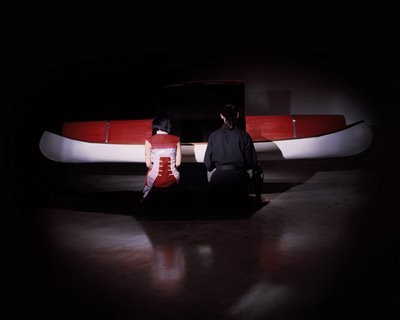
Installation view
2-channel digital video, love capsule, colour, 44 minute loop
Love capsule: Terminal Loves prompts a sceptical and questioning dialogue concerning the language of love. The work invites the viewer to enter the intimate boat / capsule to be confronted with a two channel audiovisual loop of strangers looking at them while repeating the words "I-love-you".
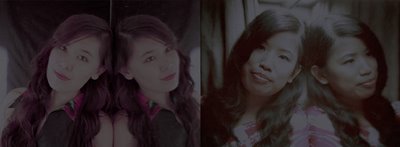
Mirror Us
Lamda print, face mounted on acrylic
53 x 120 cm

All images and original Shoufay derz.
Please kindly email for permission to use images
-->
-->


































































